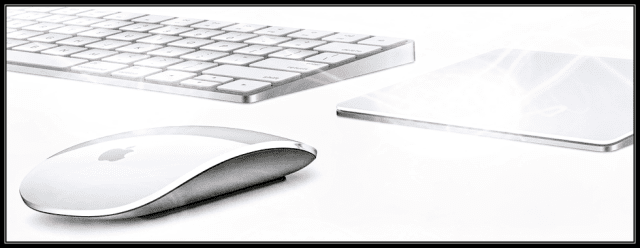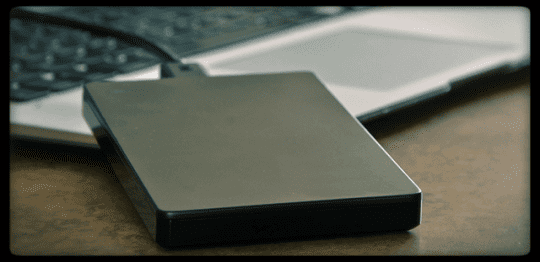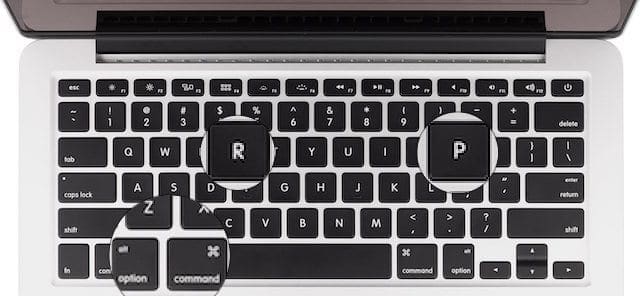Several users have reported an issue in which keyboard, trackpad and/or mouse input repeatedly stalls after the update to their macOS or Mac OS X. The issue is typified by the cursor freezing in place, or text input becoming suddenly interrupted then catching up a few seconds later.
Symptoms includes mouse freezing problems along with keyboard glitches (letters not typing, freezing) mostly happening in Safari and other internet browser apps, like Chrome and Firefox.
Related Articles
- Mouse Cursor or Pointer Disappears, Missing, Invisible? How-To Fix
- How-To Use Your Awesome macOS Utilities Folder!
Fixes For When Your Mouse, Keyboard, Trackpad Repeatedly Stall or Freeze
Remove All Peripherals Including Displays
Before you troubleshoot your system, disconnect any connected devices from your Mac, including external drives, displays, flash drives, and any third-party devices or connections. 
Only use Apple branded products, so if you normally use a third-party mouse, keyboard, or trackpad change these out temporarily and use the ones that came with your Mac. If that’s not an option, limit your connections to what is essential to test your system.
Delete errant kernel extensions
Early indications are that this issue could be related to a kernel extension (.kext) or kernel extension cache file. Kernel extensions are add-ons to the Mac OS X kernel, often designed to facilitate interaction with third-party devices or software. Specifically, some users have reported that deleting the following kernel extension:
- System/Library/Extensions/PACESupportFamily.kext
Follow this with a restart. PACE is part of an anti-piracy package installed by some software vendors.
Clear kernel caches
Some users have also reported at least temporary respite from this issue via clearing of carious caches (including kernel extension caches) with a tool such as AppleJack. To follow this routine, download AppleJack and install it, then restart your Mac in single-user mode by holding down the command and S keys at startup.
At the prompt, type “applejack auto restart” (with no quotation marks) and press return [note that while AppleJack 1.5 is technically incompatible with Snow Leopard, only the “repair permissions” function fails, which is not necessary for this process. If you’d like, you can use an alternative cache clearing tool such as YASU.]
Reset PRAM/NVRAM
This fix has worked for previous instances of this issue. Shut down your Mac, then turn it on and immediately hold down these four keys together: Option, Command, P, and R. Keep holding the keys for about 20-30 seconds and your Mac might appear to restart. 
If you have a Mac that plays a startup sound when you turn it on, you can release the keys after the second startup sound.
Boot up in Safe Mode
After the PRAM/NVRAM reset, restart your Mac while holding down the Shift key. This action reboots your Mac into Safe Mode and runs a series of health checks. Once logged in and Safe Mode completes its checks, restart normally.
Remove third-party startup items
Third-party startup items that are incompatible with macOS or Mac OS X may cause this issue. Look in the folder /Library/StartupItems/ for any third-party startup items and temporarily remove them then restart.’
Turn off keyboard light
If you are using a MacBook or other portable Mac, turning off the keyboard light (by pressing the F8 key) may resolve the issue. 
Bluetooth Issues
Battery Blues!
Check that your issues aren’t related to Bluetooth connections problems. First, make sure all your devices have fresh batteries installed and take a close look at the contacts. Are the batteries making good contact? If not, take a small piece of crunched up aluminum foil and insert it between the battery contacts. If the connection is lose, this should help.
Delete Bluetooth preferences
Delete the preferences files for Bluetooth. Open Finder and navigate to /Library/Preferences.
Look for these files:
- com.apple.driver.AppleBluetoothMultitouch.trackpad.plist – Magic Trackpad
- com.apple.driver.AppleBluetoothMultitouch.mouse.plist – Magic Mouse
- com.apple.driver.AppleHIDMouse.plist – wired USB mouse
- com.apple.AppleMultitouchTrackpad.plist
- com.apple.preference.trackpad.plist
And move those files to the trash.
Downgrade your macOS or Mac OS X
As a last resort, you can downgrade to an earlier version using the “Archive and Install” feature from your macOS or Mac OS X installation disc or via your Recovery partition. Please check Apple’s website for information and instructions on how to downgrade, specific to the version of macOS or Mac OS X you run on your machine.